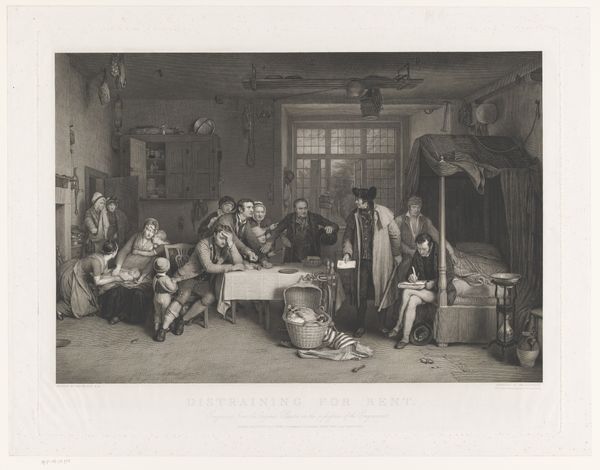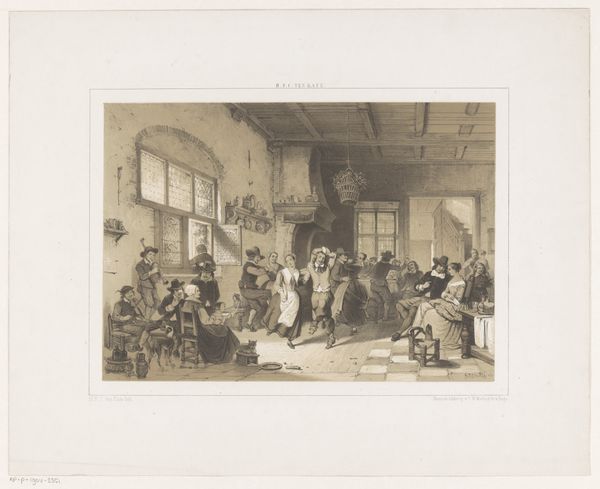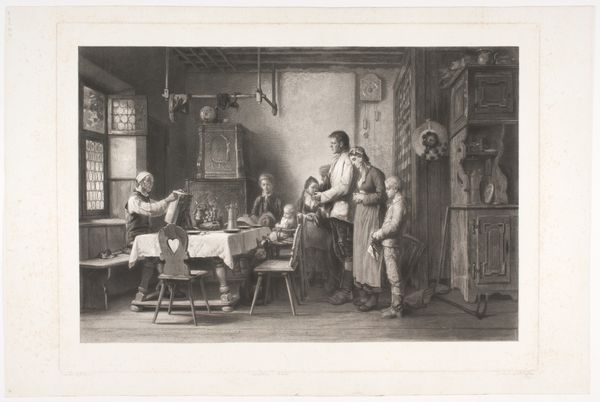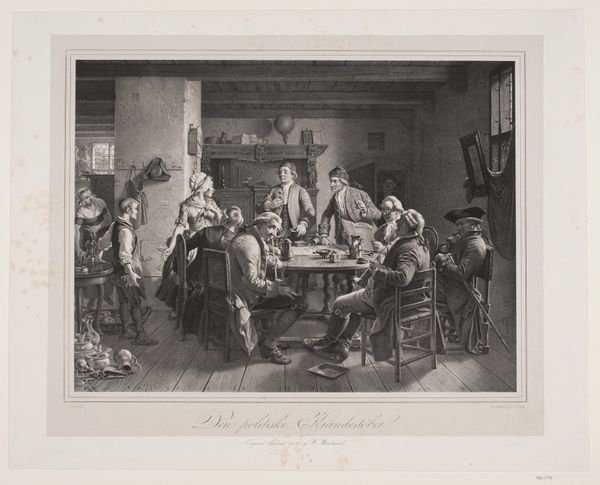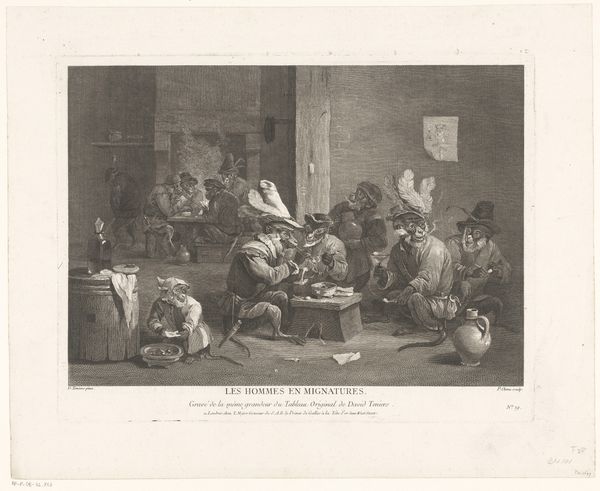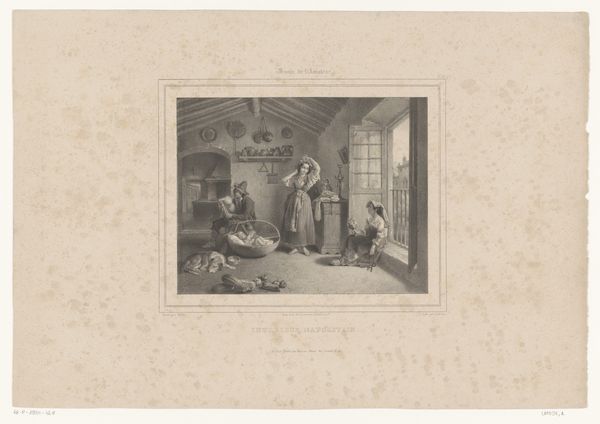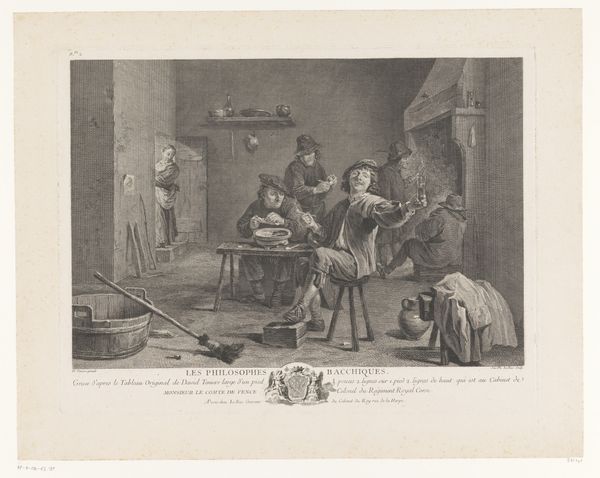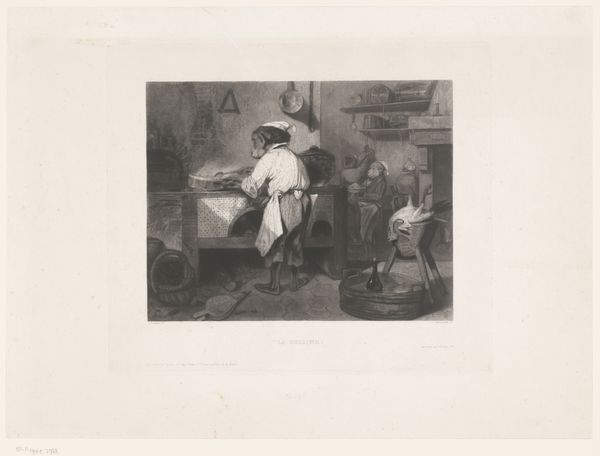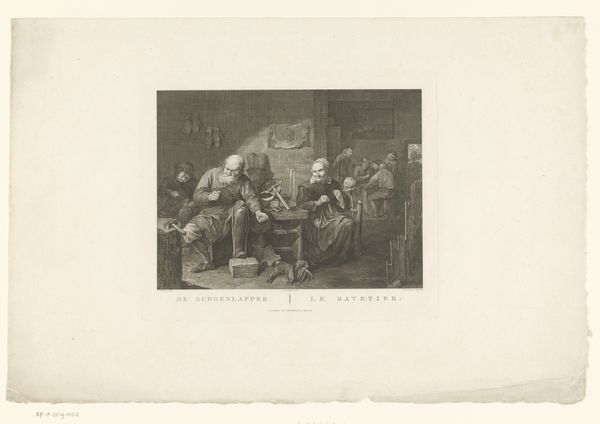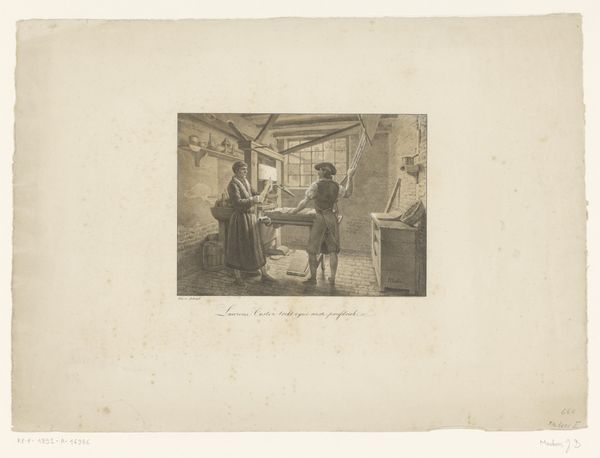
drawing, lithograph, print, paper
#
print photography
#
drawing
#
narrative-art
#
lithograph
#
ink paper printed
# print
#
wedding photography
#
landscape
#
paper
#
genre-painting
#
academic-art
#
realism
Dimensions: height 508 mm, width 728 mm
Copyright: Rijks Museum: Open Domain
Curator: The lithograph before us is titled “Schoolklas,” believed to be created by William Howison sometime between 1851 and 1855. I find it strikingly evocative; the monochromatic palette almost mutes the energy of a schoolroom, creating this uncanny stillness. Editor: Yes, there’s something definitely sepulchral about it. Yet, considering the socio-political constraints around educational access during that time, especially for children from working-class backgrounds, such depictions become less sentimental and more a testament to cultural norms. We see the uneven playing field symbolized here in the bodies that take up very different spaces within it. Curator: Indeed. And how does the space itself function within the work? It’s fascinating how Howison captures the controlled chaos within the single classroom. Look how some students actively engage while others appear distant. The window brings natural light and is this sort of implied contrast between the freedom outside of this highly formalized structure. The gaze, what these young eyes have to face when they leave, the tools given them to be active citizens and moral subjects of the Empire… Editor: That play of light, or its absence, creates this stark commentary on knowledge, pedagogy and their distribution. The teacher, he becomes a conduit—literally delivering wisdom, while, contrastingly, the pupils struggle to contain their restless physical energies, hemmed into the benches, their childhood repressed under Victorian values of work and piety. Curator: It certainly makes us question who that benefits and on whose labor those values are built. There’s an implicit tension. While the scene seems focused on imparting knowledge, it simultaneously underscores issues of class, childhood, and social reform during a rapidly changing era. Editor: Considering this print emerged amidst wider conversations regarding industrialization, social inequity, and mandatory education, this simple lithograph suddenly speaks to a broader landscape of 19th-century British culture. Howison captured this era and created a lasting dialogue that echoes even today. Curator: Absolutely. Howison created this silent yet evocative portrayal of childhood under observation, one where these gazes seem as much burdened as blessed by the social order into which they are being indoctrinated. It urges us to recognize that the stories this classroom would teach are shaped not only by pedagogic practice but by institutional frameworks themselves.
Comments
No comments
Be the first to comment and join the conversation on the ultimate creative platform.
